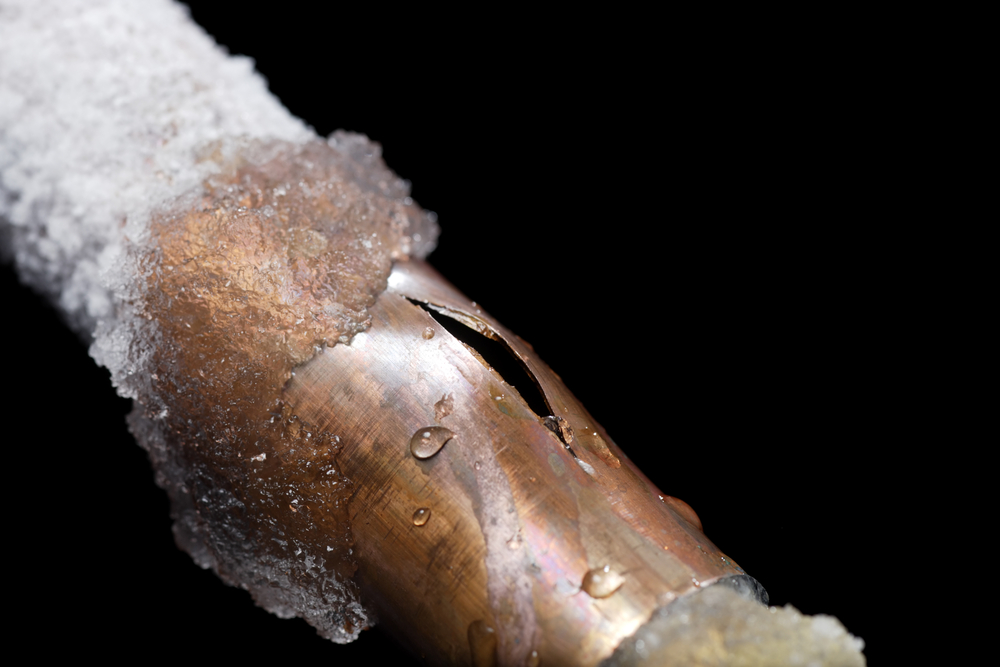Protecting Your Pipes from Freezing: Effective Methods
Protecting Your Pipes from Freezing: Effective Methods
Blog Article
Almost everyone is bound to have their unique idea involving Preventing and dealing with frozen pipes.

Winter can ruin your pipes, particularly by freezing pipes. Right here's just how to stop it from occurring and what to do if it does.
Introduction
As temperature levels decline, the danger of icy pipelines rises, potentially leading to pricey repair work and water damages. Recognizing how to avoid frozen pipes is crucial for homeowners in chilly climates.
Recognizing Icy Pipelines
What triggers pipes to freeze?
Pipes freeze when revealed to temperature levels listed below 32 ° F (0 ° C) for extended periods. As water inside the pipelines freezes, it broadens, putting pressure on the pipeline walls and possibly creating them to rupture.
Risks and problems
Icy pipes can lead to supply of water disturbances, residential or commercial property damages, and pricey repair services. Burst pipelines can flood homes and trigger extensive architectural damages.
Indicators of Frozen Piping
Recognizing icy pipes early can prevent them from rupturing.
Exactly how to determine frozen pipes
Search for reduced water flow from faucets, unusual odors or sounds from pipelines, and visible frost on exposed pipes.
Avoidance Tips
Shielding at risk pipes
Wrap pipelines in insulation sleeves or utilize heat tape to shield them from freezing temperature levels. Focus on pipelines in unheated or exterior areas of the home.
Heating strategies
Keep indoor spaces effectively heated, specifically areas with pipes. Open cupboard doors to allow cozy air to distribute around pipelines under sinks.
Safeguarding Exterior Pipes
Garden tubes and outdoor faucets
Detach and drain garden hoses before winter season. Set up frost-proof faucets or cover outside taps with shielded caps.
What to Do If Your Pipelines Freeze
Immediate activities to take
If you believe frozen pipelines, maintain taps open to soothe stress as the ice melts. Utilize a hairdryer or towels taken in hot water to thaw pipes gradually.
Long-Term Solutions
Architectural modifications
Think about rerouting pipelines far from outside walls or unheated areas. Include extra insulation to attic rooms, basements, and crawl spaces.
Updating insulation
Purchase premium insulation for pipes, attics, and wall surfaces. Appropriate insulation aids preserve regular temperatures and lowers the danger of icy pipes.
Final thought
Preventing frozen pipelines calls for positive steps and fast responses. By comprehending the reasons, signs, and safety nets, homeowners can secure their pipes throughout winter.
6 Proven Ways to Prevent Frozen Pipes and Protect Your Home
Disconnect and Drain Garden Hoses
Before winter arrives, start by disconnecting your garden hoses and draining any remaining water. Close the shut-off valves that supply outdoor hose bibs and leave the outdoor faucet open to allow any residual water to drain. For extra protection, consider using faucet covers throughout the colder months. It’s also important to drain water from any sprinkler supply lines following the manufacturer’s directions.
Insulate Exposed Pipes
Insulating your pipes is an effective way to prevent freezing. Pipe insulation is readily available at home improvement stores and is relatively inexpensive. Pay close attention to pipes in unheated areas such as the attic, basement, crawl spaces, or garage. Apply foam insulation generously to create a buffer against the cold. You can also wrap your pipes in heat tape or thermostat-controlled heat cables for added warmth.
Seal Air Leaks
Inspect your home for any cracks or openings that could let in cold air. Seal any holes around the piping in interior or exterior walls, as well as the sill plates where your home rests on its foundation. Additionally, make sure to keep your garage door closed unless you’re entering or exiting. Leaving it open creates a significant air leak that can lead to frozen pipes.
Allow Warm Air Circulation
During cold snaps, it’s essential to allow warm air to circulate evenly throughout your home. Leave interior doors ajar to promote better airflow. Open kitchen and bathroom cabinets to help distribute heat consistently around the rooms. If you have small children or pets, be sure to remove any household chemicals or potentially harmful cleaners from open cabinets for safety.
Let Faucets Drip
A small trickle of water can make a big difference in preventing ice formation inside your pipes. When temperatures drop significantly, start a drip of water from all faucets served by exposed pipes. This continuous flow helps prevent the water from freezing. Additionally, running a few faucets slightly can relieve pressure inside the pipes, reducing the chances of a rupture if the water inside does freeze.
https://choateshvac.com/6-proven-ways-to-prevent-frozen-pipes-and-protect-your-home/

I am just very fascinated by Preventing and dealing with frozen pipes and I'm hoping you enjoyed reading my blog post. If you please take a moment to share this blog if you enjoyed reading it. Thanks so much for taking the time to read it.
Call Today Report this page